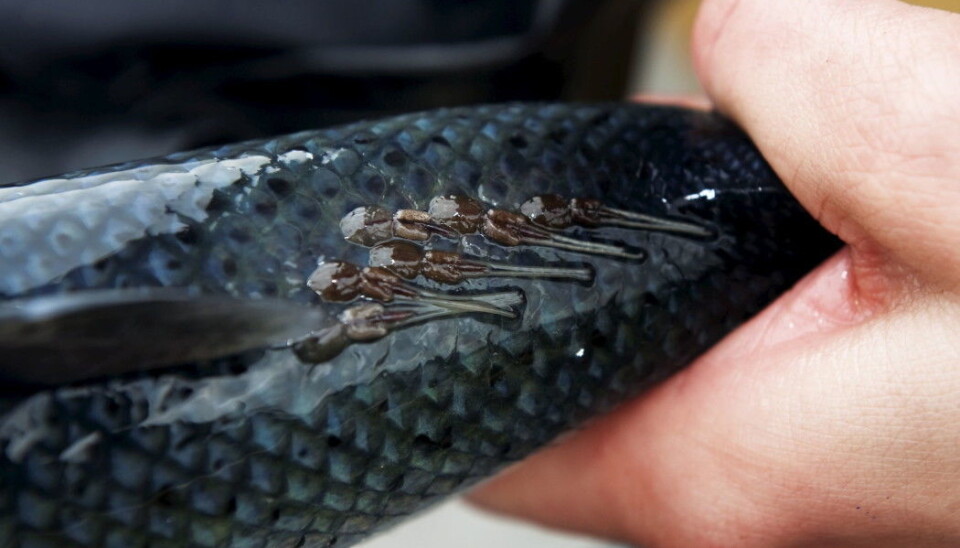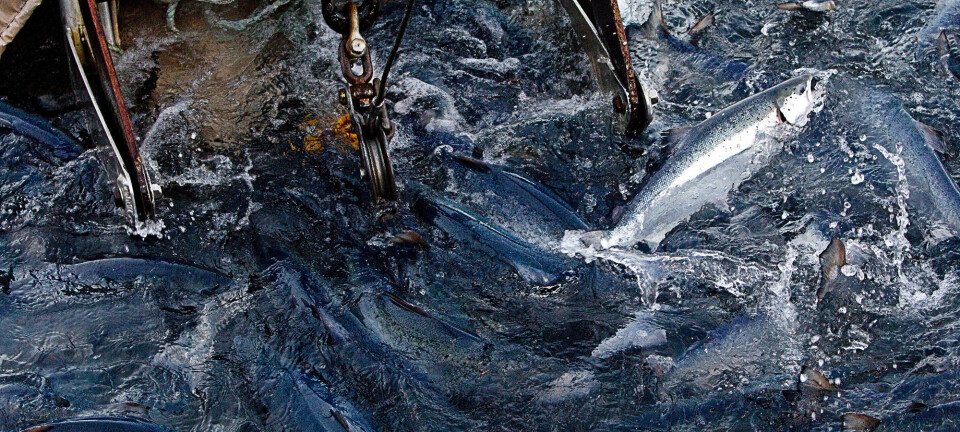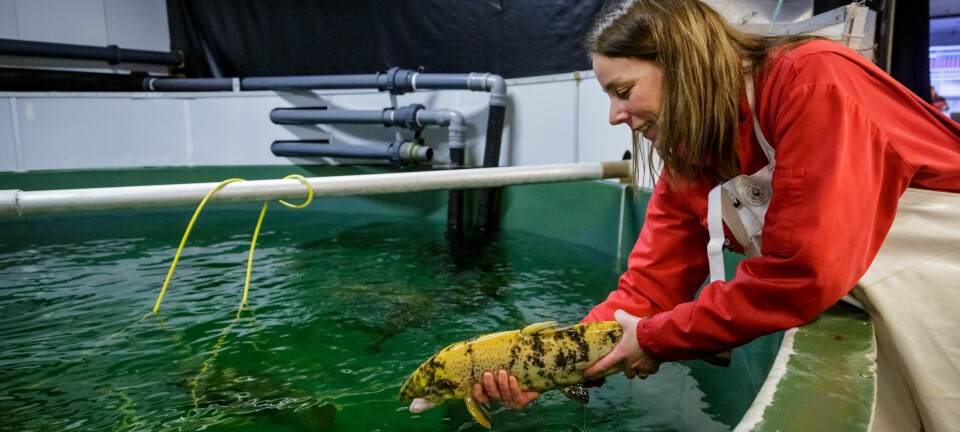
Hope for norway's coastal industry:
Noise caused sea lice to eat and reproduce less
This parasite costs Norwegian salmon farming almost 500 million euros each year. Could noise be the solution? Sound-emitting speakers weaken the lice's appetite. They fall off more easily and their reproduction drops dramatically, according to experiments in a Norwegian fjord.
The salmon industry is Norway’s most profitable export industry, second only to oil and gas. But the industry's fight against sea lice never ends, costing the industry millions of Euros each and every year.
Chemicals, machines, boiling water and lasers have all been used as weapons in the fight against the tiny parasites. Most of these delousing techniques have negative effects on both the salmon and the environment, while the lice have proven to be troublingly hardy and resistant. Small cleaning fish that eat the lice are far more gentle on the environment and the salmon, but cause a lot of wastage. Their use has also been questioned by animal rights activists.
Now studies are showing that something as simple as noise could be the next, gentle weapon.
“An acoustic sound image at a certain frequency seems to reduce the sea lice's ability to absorb nutrients. A large percentage fall off after three to four weeks,” says Albert Imsland.
Imsland is the R&D manager for aquaculture and seafood at Akvaplan-niva and the office manager at Akvaplan-niva's Iceland office. He spoke at this year's recent Lice Conference.
Horrible sound
Humans can’t perceive the low-frequency sound that is emitted. Nor do the salmon seem to be affected by the noise.
“We know that sound has an effect on other animals. Sea lice experience the sound as very unpleasant,” Imsland tells forskning.no.
The company that patented the invention got the idea 20 years ago, thanks to a coincidence.
“It was a coincidence that we found that lumpfish and wrasse ate sea lice,” Imsland says.
Since then, they have systematically researched this finding by trial and error on a small scale with complex acoustic sound.
“Akvaplan-niva, in collaboration with the University of Bergen, then started to test the effect scientifically,” says Imsland.
They researched the effect of low-frequency sound on sea lice in Norwegian fish farms in the Hardangerfjord.
Imsland holds a Professor II position at the University of Bergen. The Icelander also took his education at UiB.
Dramatic decline in larvae
One of the reasons that sea lice pose an ongoing challenge is that sexually mature female lice feeding on salmon can lay 13 000 eggs that hatch into larvae.
“Lice that were exposed to noise produced far fewer free-swimming larvae, or offspring, than lice in other facilities without noise,” says Imsland.
The finding came from a pilot study of several different cages in the Hardangerfjord in 2018.

“It was a dramatic decline,” he says.
Fish farms that had installed the noise system also avoided lice problems longer than other farms.
The experimental farms had a full seven weeks longer production time than other facilities in the same area, before the required delousing became necessary.
“This is a significantly longer undisturbed production time for the salmon,” he says.
The limit is 0.5 adult female lice per salmon. Five or more such lice occurring per ten salmon that are picked up at random requires delousing the facility.
The requirement is even stricter during certain weeks in the spring, when the limit is 0.2 lice per salmon.
Failure common when upscaling
Researcher Lars Qviller at the Norwegian Veterinary Institute has worked extensively with sea lice. He did not attend the lecture and therefore has limited insight into exactly how this experiment was done. Instead he describes the idea more generally.
“As a general observation, I can say that a lot of exciting research and development work is being done on dealing with sea lice, but a lot of techniques don’t work when they’re tested on a larger scale,” says Qviller.
“We know far too little about the effectiveness of preventive methods because it isn’t reported in a systematic way,” he says.
“It’s really difficult to separate the effects of the treatment from other conditions, which Imsland also touches on. He mentions cleaning fish, but other factors like local differences in sea lice infestation pressure, how sea lice are exposed to the current, and simple coincidence can also affect the results of sea lice counts,” he says.
Qviller also believes that it will be interesting to see an assessment of how such noise sources might affect the environment around the test site.
“The fact that Imsland describes the method’s effectiveness as significant is promising, and it’ll be exciting to see the results of large-scale testing,” says Qviller.

No major threats for salmon welfare
Akvaplan-niva and UiB have also investigated whether salmon are stressed by the low-frequency noise that sea lice clearly are sensitive to.
“We’ve taken blood samples from the salmon, which included measuring their level of cortisol, a stress hormone. We found no difference between the salmon in cages with the noise and in cages without the noise,” says Imsland.
He believes this indicates that the salmon don’t perceive the noise as unpleasant.
Admittedly, a lot of factors came into play in the area where they tested the new technique.
“Some cages were using cleaner fish and others weren’t, making comparison difficult. But the difference was significant when we checked for other variables.
Testing of the AcuLice sound treatment will now proceed on a large scale. If all goes well, Imsland hopes that the patent will be able to be used commercially in two years, at the earliest.
Translated by: Ingrid Nuse
Read the Norwegian version of this article on forskning.no.
References:
Lusekonferansen 2021 digital (Sea lice conference), arranged by the Norwegian Seafood Research Fund (FHF).
P. H. Kvadsheim et al: Effekten av støyforurensning på havmiljø. (Impact of anthropogenic noise on the marine environment.) Summary. The Norwegian Defence Research Establishment (FFI) and the Institute of Marine Research (IMR). 1 April 2020.

































